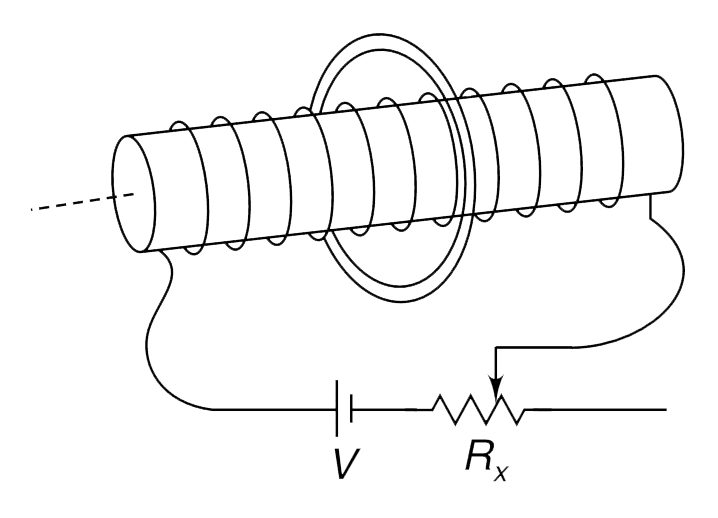The specific charge of an electron is
1.6×10−19 coulomb
4.8×10−10 statcoulomb
1.76×1011 coulomb/kg
1.76×10−11 coulomb/kg
The correct Answer is:C
Step by step video, text & image solution for The specific charge of an electron is by Physics experts to help you in doubts & scoring excellent marks in Class 12 exams.
Topper's Solved these Questions
- BOOK - ERRORLESS CHAPTER - ELECTRON, PHOTON, PHOTOELECTRIC EFFECT AND X-RAYSEXERCISE - Cathode Rays and Positive Rays11videos
ELECTRON, PHOTON, PHOTOELECTRIC EFFECT AND X-RAYS
- BOOK - ERRORLESS CHAPTER - ELECTRON, PHOTON, PHOTOELECTRIC EFFECT AND X-RAYSEXERCISE - Photon and Photoelectric Effect4videos
ELECTRON, PHOTON, PHOTOELECTRIC EFFECT AND X-RAYS
- BOOK - ERRORLESS CHAPTER - ELECTRO MAGNETIC INDUCTIONEXERCISE - SET20videos
ELECTRO MAGNETIC INDUCTION
- BOOK - ERRORLESS CHAPTER - ELECTRONICSEXERCISE - Selv Evaluation Test23videos
ELECTRONICS
Similar Questions
If an X-ray tube operates at the voltage of 10kV, find the ratio of the de-broglie wavelength of the incident electrons to the shortest wavelength of X-ray producted. The specific charge of electron is 1.8×1011Ckg.
View SolutionAn X-ray tube operates at the voltage of 40 kV.Find the ratio of the shortest wavelength of X-ray produced to the de-Broglie wavelength of the incident electron. The specific charge of electron is 1.8×1011 C/kg
View Solution
Knowledge Check
- Question 1 - Select One
Radiation is incident on a photosensitive surface and the stopping potential is found to be 9 V. What is the maximum velocity of the ejected photo electrons if the specific charge of the electron is 1.8×1011 C/kg ?
A6.6×105 m/sB1.8×106 m/sC8×106 m/sD12×105 m/s - Question 2 - Select One
Electrons move at right angles to a magnetic field of 1.5×10−2 Tesla with a speed of 6×107m/s. If the specific charge of the electron is 1.7×1011C/kg. The radius of the circular path will be
A2.9cmB3.9cmC2.35cmD3cm - Question 3 - Select One
When the speed of electrons increases, then the value of the specific charge on an electron
AincreasesBdecreasesCremains unchangedDnone of these
A long narrow solenoid of radius a has n turns per unit length and resistance of the wire wrapped on it is R. The solenoid is connected to a battery of emf V through a variable resistance Rx. There is a conducting ring of radius 2a held fixed around the solenoid with its axis coinciding with that of the solenoid. The relaxation time of free electrons inside the material of the conducting ring at given temperature is τ and specific charge of an electron is α. The variable resistance Rx is changed linearly with time from zero to R in an interval Δt. Calculate the drift speed of the free electrons in the ring during this interval. [Neglect inductance]
 View Solution
View Solution(a) Estimate the speed with which electrons emitted from a heated emitter of an evacuated tube impinge on the collector maintained at a potential difference of 500 V with respect to the emitter. Ignore the small initial speeds of the electrons. The specific charge of the electron i.e., its e/m is given to be 1.76×1011C kg−1.
(b) Use the same formula you employ in (a) to obtain electron speed for an collector potential of 10 MV. do you see what is wrong ? In what way is the formula to be modified ?View SolutionA beam of electron enter at right angle to an uniform electric field with a velocitgy 3x107m/s,E=1800v/m while travelling through a distance of 10cm , the beam deflected by 2mm then specific charge of electron is
View SolutionAssertion (A),In the Thomson's e/m experiment of electrons, the specific charge of electrons is independent of natural of the discharge tube
Reason (R ): Charge of a body is quantizedView SolutionIn a straight conductor of uniform cross-section charege q is flowing for time t. Let s be the specific charge of an electron. The momentum of all the free electrons per unit length of the free electrons per unit length of the conductor, due to their drift velocity only is
View Solution

